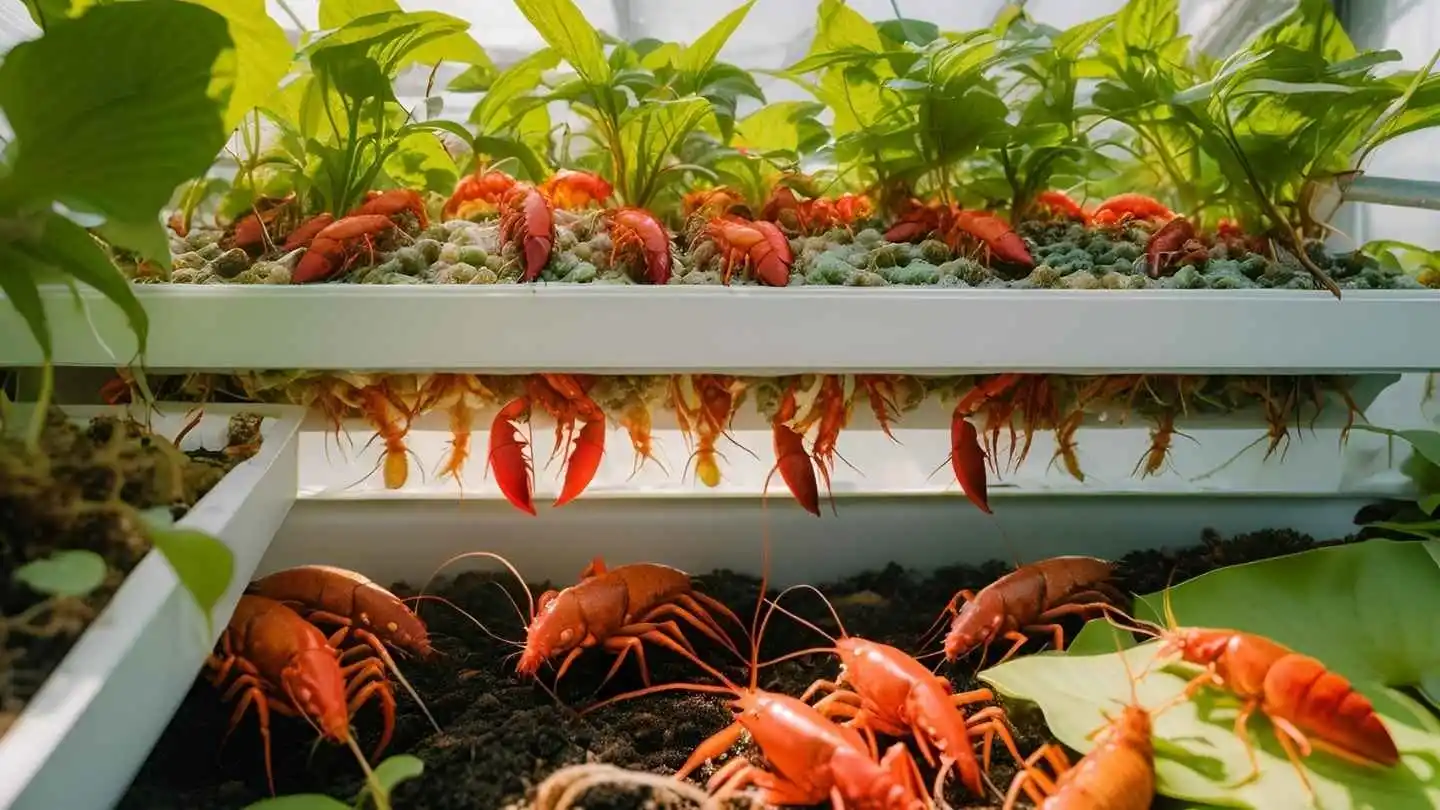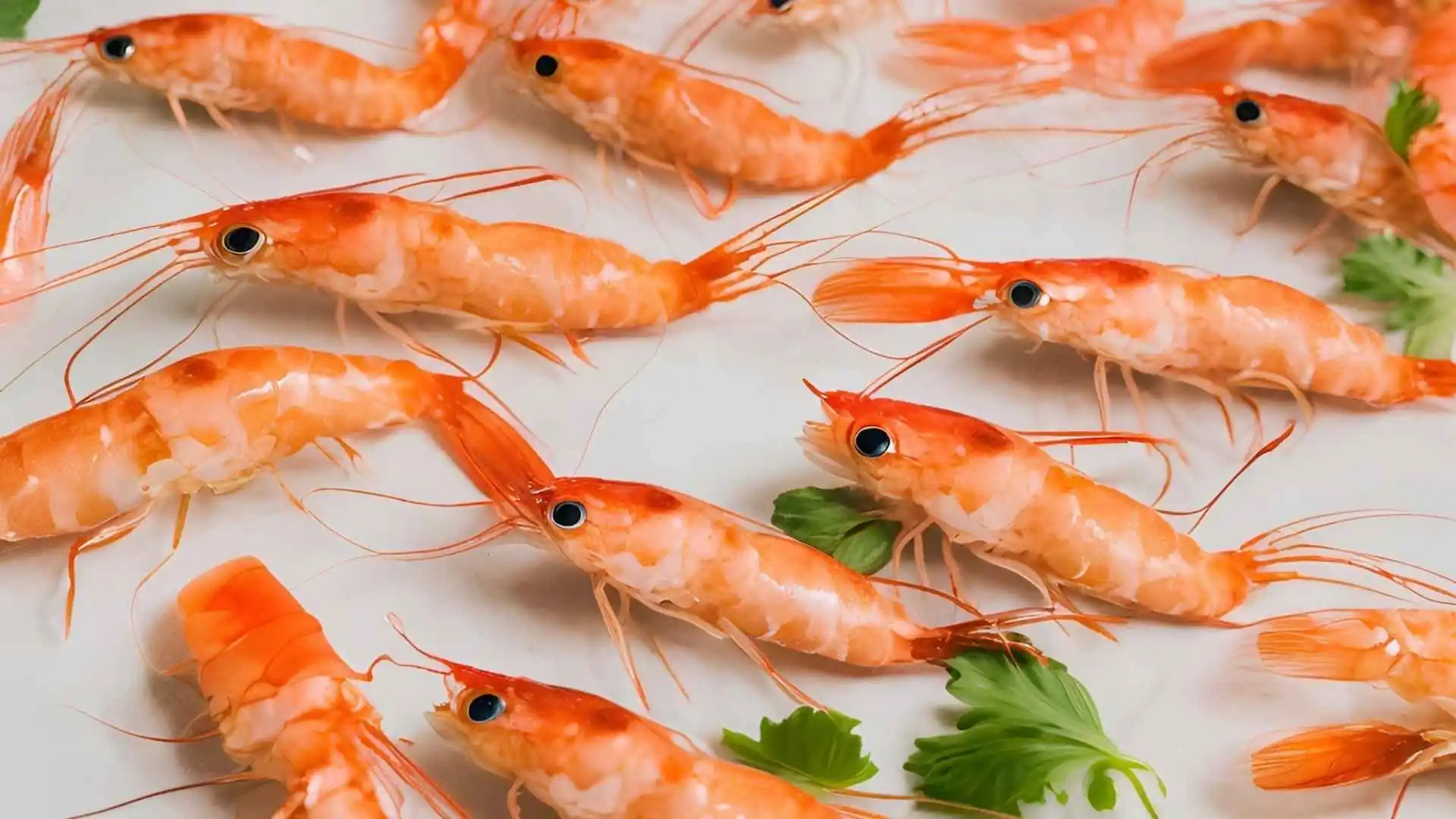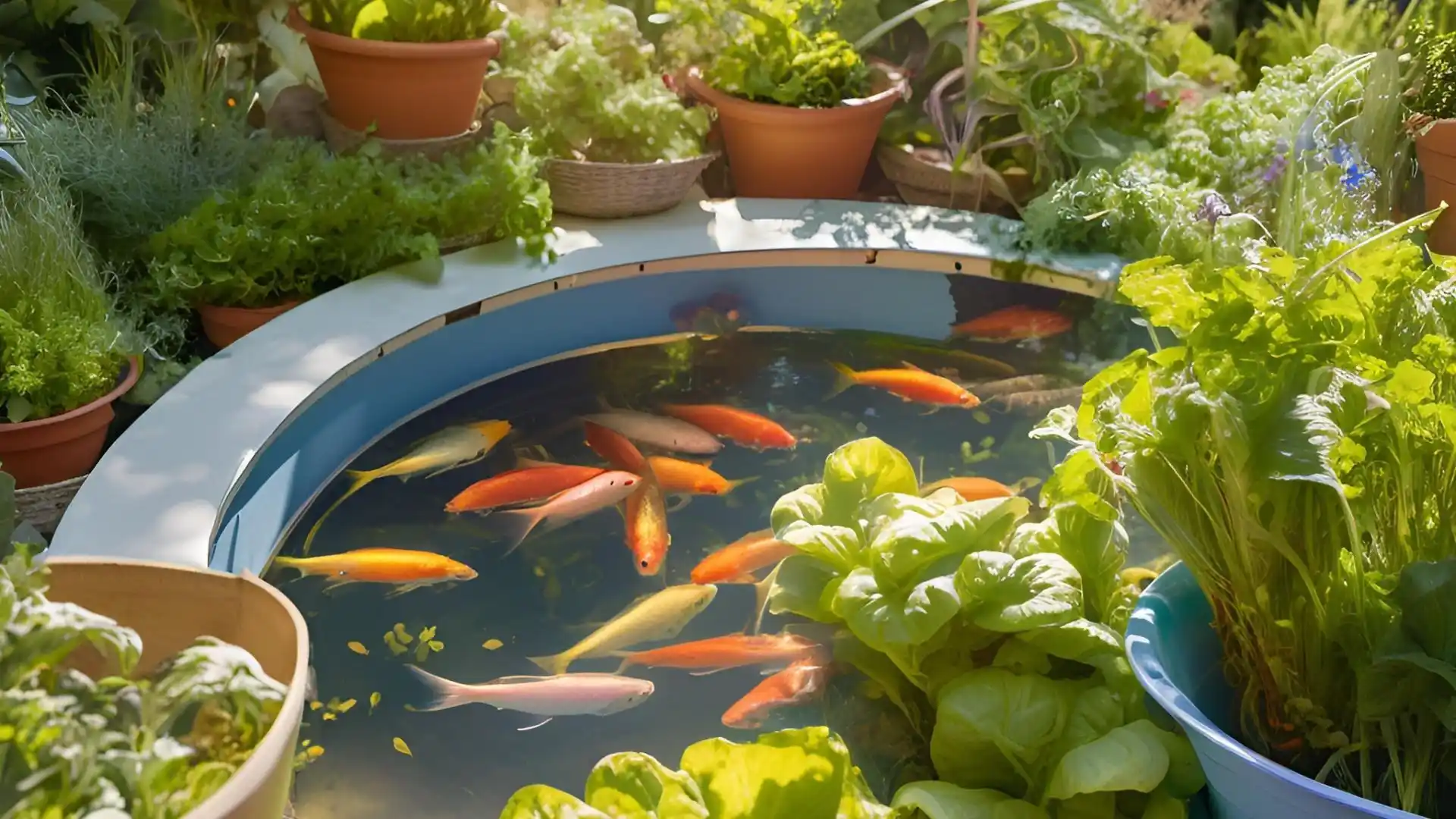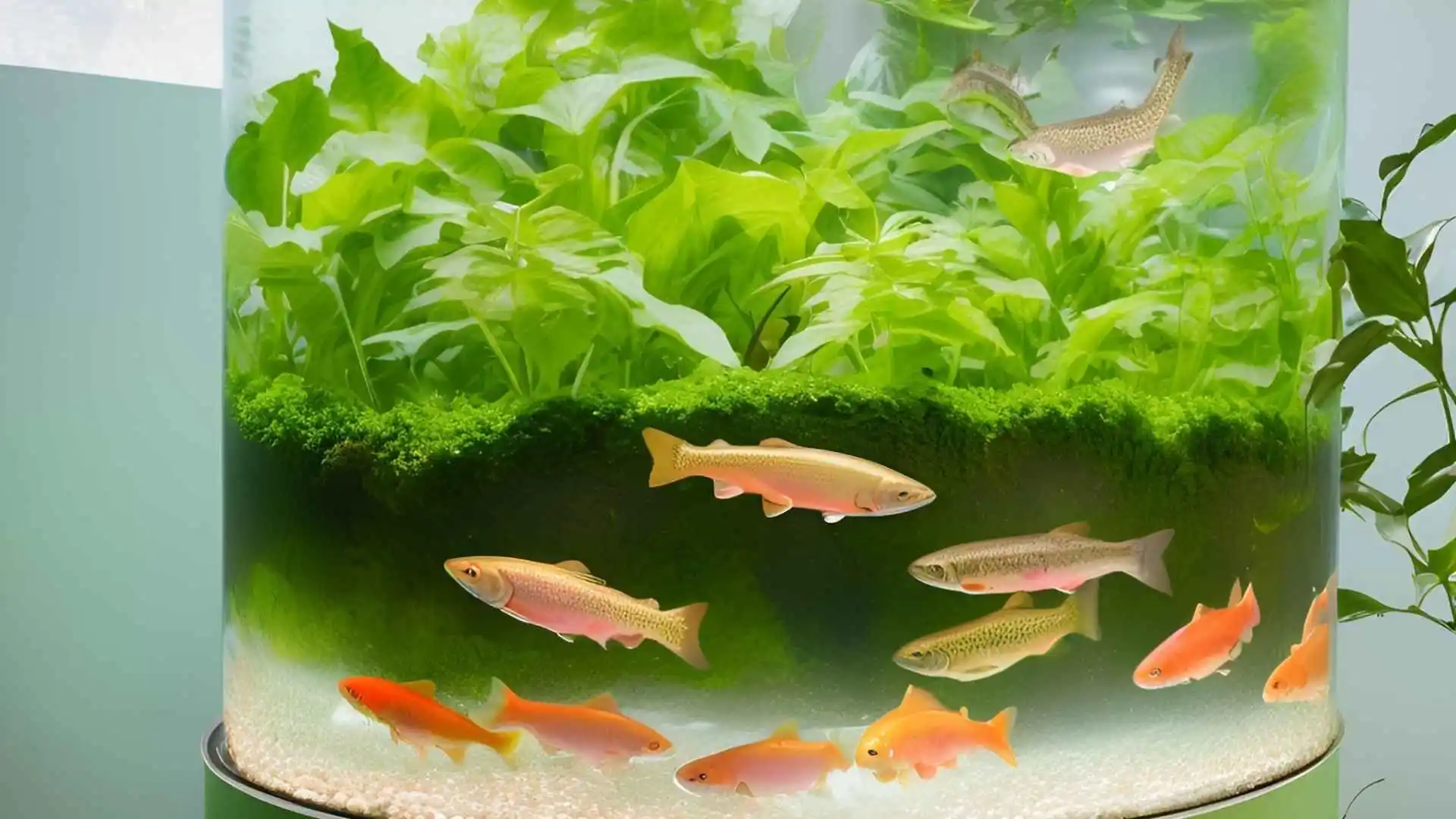Complete Guide to Successful Aquaponics Crayfish Farming: Tips, Techniques, and Solutions
Aquaponics is a groundbreaking farming system that combines aquaculture (raising aquatic organisms) and hydroponics (growing plants without soil) to create a sustainable and highly efficient agricultural system.
This integrated approach allows for a closed-loop ecosystem where both fish (or other aquatic species) and plants support each other’s growth. While many aquaponics systems feature common fish species like tilapia or catfish, one particularly exciting and lesser-known species to consider is the crayfish.
Aquaponics crayfish farming is rapidly gaining popularity among aquaculture enthusiasts due to its unique benefits. Crayfish, known for their delicious taste and versatility in cooking, also play a vital role in aquaponics systems.
As scavengers, they help maintain water quality by breaking down organic matter, algae, and detritus. This process keeps the water clean, which not only benefits the crayfish but also supports the health of other aquatic species and plants in the system.
In this article, we’ll delve into the key factors necessary for successful crayfish aquaponics farming, from understanding stocking densities and selecting compatible tank mates to feeding habits and water quality management.
Additionally, we’ll cover regulations to ensure compliance with local standards. By the end of this guide, you’ll have a comprehensive understanding of how to create and manage an efficient and sustainable aquaponics crayfish system.
Contents
- 1 Stocking Densities for Aquaponics Crayfish
- 2 Tank Mates for Crayfish Aquaponics Systems
- 3 Feed Habits of Aquaponics Crayfish
- 4 Water Quality for Crayfish Aquaponics Systems
- 5 Regulations in Crayfish Aquaponics Farming
- 6 Grow Your Aquaculture Business with FnB Tech
- 7 Conclusion: Achieving Success with Crayfish Aquaponics
- 8 Frequently Asked Questions
Stocking Densities for Aquaponics Crayfish
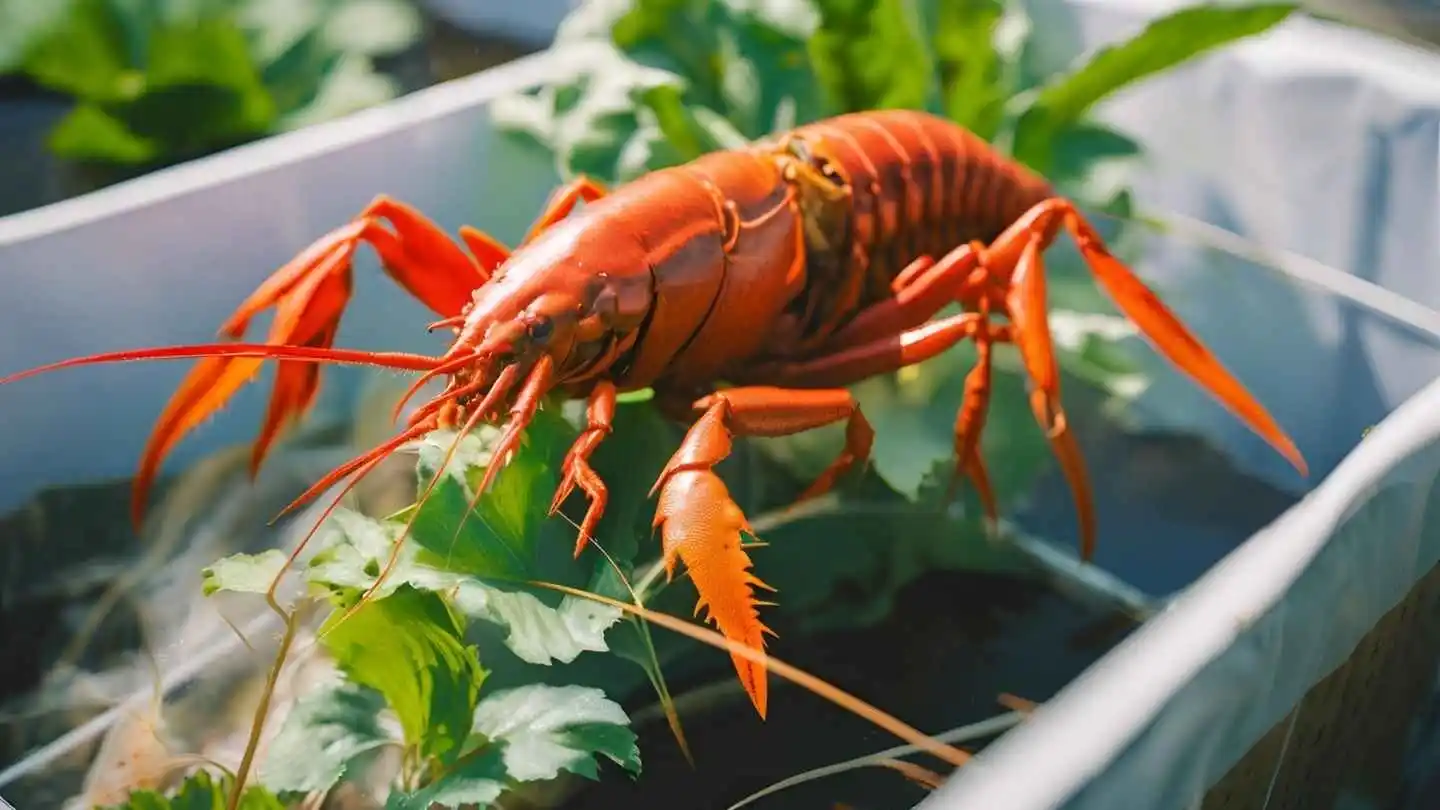
One of the first and most important considerations when setting up a crayfish aquaponics system is determining the appropriate stocking density. Crayfish are territorial creatures, and overcrowding can lead to competition for space, aggressive behavior, and stunted growth. Therefore, finding the right balance is essential to creating a healthy environment for your crayfish.
The ideal stocking density for aquaponics crayfish largely depends on the size of your tank and the available space. Generally, a recommended guideline for crayfish aquaponics is to stock 10-20 crayfish per square meter of tank space. This allows the crayfish to establish their territories and engage in natural behavior, such as burrowing and hiding, which are critical for their well-being.
Additionally, the density will depend on the species of crayfish you choose to farm. For example, larger species may require more space to thrive. You should also account for the growth rate and weight of the crayfish, as these factors will impact how many can be sustainably supported by the system.
Maintaining appropriate stocking densities will help reduce stress, prevent fighting, and ensure that your crayfish grow at a healthy rate. It also allows for better water quality management, which is crucial for the health of both your crayfish and the plants in your aquaponics crayfish system.
Tank Mates for Crayfish Aquaponics Systems
When designing your crayfish aquaponics system, it’s crucial to choose compatible tank mates. Crayfish are not only territorial but can also exhibit predatory behavior, so selecting species that are compatible with crayfish is key to maintaining balance within the system.
In a crayfish aquaponics setup, ideal tank mates are species that will not disturb the crayfish or compete for food. Tilapia and catfish are popular choices because they thrive in similar water conditions and are less likely to harm or stress the crayfish.
These species can also benefit from the natural filtration that crayfish provide, as they clean up organic matter that otherwise could pollute the water.
Avoid small fish or species that might be too vulnerable to the crayfish’s predatory nature. Additionally, choose species that can tolerate similar water temperature and pH levels, as consistency in these factors is essential for all organisms in the system.
By carefully selecting compatible tank mates, you can create a balanced and harmonious aquaponics system where the crayfish, fish, and plants all thrive together.
Feed Habits of Aquaponics Crayfish
Feeding aquaponics crayfish is relatively straightforward, but it’s important to understand their natural diet and provide a well-balanced feeding schedule to ensure optimal growth. Crayfish are omnivores, meaning they eat both plant material and small invertebrates, making them excellent scavengers in an aquaponics system.
In your crayfish aquaponics system, crayfish will naturally feed on decaying plant matter, algae, and organic debris, contributing to water filtration. However, to promote healthy growth and reproduction, crayfish should be fed a supplemental diet.
High-quality protein pellets designed for crayfish, vegetables such as lettuce, carrots, and cucumbers, as well as occasional live foods like worms or small insects, can all be part of their diet.
It’s important to avoid overfeeding, as excess food can contribute to poor water quality and increase waste in the system. Overfeeding can also lead to competition and aggression among the crayfish. Monitor their feeding habits and adjust portion sizes as needed, depending on the crayfish’s growth and the capacity of the system to maintain clean water.
By managing feed habits properly, you ensure that the crayfish remain healthy and that the aquaponics system remains balanced and efficient.
Water Quality for Crayfish Aquaponics Systems
Water quality is critical in any aquaponics system, but it is especially important for crayfish aquaponics due to the sensitive nature of crayfish to changes in their aquatic environment. Regular monitoring and management of water quality will ensure that your crayfish and plants thrive.
Key water parameters to monitor for aquaponics crayfish include:
- pH Level: Crayfish prefer slightly alkaline water, with a pH range of 7.0 to 8.0. Regularly check the pH to ensure it remains within this range to prevent stress and promote healthy growth.
- Dissolved Oxygen: Crayfish need well-oxygenated water to survive. Ensure that your system maintains a dissolved oxygen level above 5 ppm. Use aerators or air stones to maintain sufficient oxygen levels in the water, especially during warmer months when oxygen levels tend to drop.
- Ammonia and Nitrites: High levels of ammonia and nitrites can be toxic to crayfish, leading to health problems and death. Ideally, ammonia levels should be below 0.25 ppm, and nitrites should remain at 0 ppm. Regularly test for these compounds and ensure that your filtration system is working efficiently.
By maintaining optimal water quality, you create a healthy environment for your crayfish and plants, ensuring that your crayfish aquaponics system remains productive and sustainable.
Regulations in Crayfish Aquaponics Farming
Before embarking on your crayfish aquaponics journey, it’s essential to be aware of the regulations surrounding crayfish farming. Local and regional laws may vary, so ensure that you are in compliance with the necessary permits and requirements for aquaculture.
Key regulations to consider include:
- Aquaculture Permits: Depending on where you are located, you may need a permit to farm crayfish. This can vary by country or region, so it’s important to check with local authorities before starting your farm.
- Species Restrictions: Some areas may have restrictions on which species of crayfish you can farm, especially if they are considered invasive. Be sure to choose species that are allowed in your region to avoid legal complications.
- Water Quality and Environmental Standards: Many regions have specific environmental standards for aquaculture operations, such as limits on water pollution or waste discharge. Ensure your system complies with these regulations to avoid penalties and protect the local ecosystem.
By staying informed and complying with these regulations, you can ensure the long-term success and legality of your crayfish aquaponics farm.
Grow Your Aquaculture Business with FnB Tech
FnB Fishery provides not just high-quality products but also advanced technological solutions that enhance the efficiency and success of your aquaculture operations. Innovation and technology integration are key to thriving in today’s aquaculture industry, and FnB Fishery is here to help you maximize the potential of your fish and shrimp farming business.
- Fishery App
The Fishery App is a management tool that allows you to monitor water quality and feeding patterns for your fish or shrimp in real-time. This app makes it easy to schedule feeding, monitor fish health, and manage your entire aquaculture system remotely. With the Fishery App, you can ensure your operations run smoothly, reducing operational costs and improving your harvests. - Smart Feeder
To complement your automated feeding system, FnB Fishery also offers the advanced Smart Feeder. This system allows for controlled and precise feeding for your fish or shrimp, minimizing feed waste and ensuring optimal fish growth. By using this technology, you can save time, reduce labor costs, and minimize the environmental impact of excess feed. - Innovative Technology Integration
FnB Fishery integrates cutting-edge technologies to elevate your aquaculture system, from automated water quality monitoring systems to temperature and oxygen monitoring technologies. All of these are designed to provide you with more accurate and detailed data about the conditions of your ponds or aquaponics fish tank, ensuring your operations are running optimally. - Expert Consultancy and Training
We understand that success in aquaculture doesn’t just rely on technology but also on the right knowledge and skills. FnB Fishery offers expert consultancy and training for both novice and experienced fish and shrimp farmers. Our training covers efficient fish management techniques, water quality management, disease control, and strategies for improving harvests. Our team of experts is ready to guide you every step of the way, making your aquaculture business more productive and profitable.
With the innovative solutions from FnB Fishery, you can manage your aquaculture business smarter, more efficiently, and sustainably. We don’t just provide products; we empower farmers with the tools and knowledge they need to succeed.
Ready to take your business to the next level? Click contact to get in touch with our experts and start optimizing your aquaculture operations today!
Conclusion: Achieving Success with Crayfish Aquaponics
Raising aquaponics crayfish can be a highly rewarding and sustainable farming venture, offering multiple benefits such as water filtration, healthy crayfish production, and an integrated plant-growing system. By carefully managing stocking densities, tank mates, feed habits, water quality, and adhering to regulations, you can build a thriving crayfish aquaponics system.
With the right tools, technologies, and support, you can take your crayfish aquaponics business to the next level. Solutions like FnB Tech’s smart systems and expert consultancy can help streamline your operations, making it easier to maintain optimal conditions for your crayfish and plants.
Are you ready to scale up your crayfish aquaponics farm? Click here for our solution and explore the best options for your business growth.
Frequently Asked Questions
What are the benefits of incorporating crayfish into an aquaponics system?
Crayfish help clean the aquaponics system by consuming leftover food and organic matter, while also increasing harvest diversification.
How do you maintain the right water quality for aquaponics crayfish?
Ensure the water pH is between 6.5-8.0, maintain adequate dissolved oxygen levels, and keep the water temperature stable between 22-28°C for optimal crayfish health.
What are the ideal stocking densities for aquaponics crayfish farming?
The ideal stocking density is 10-20 crayfish per square meter, depending on tank size and filtration system efficiency to prevent stress and cannibalism.


